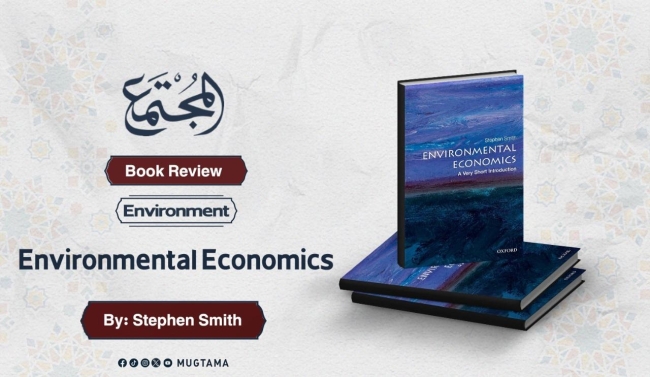Book Review of “Environmental Economics” by Stephen Smith
Stephen Smith, a professor of economics at University College London (UCL), has a notable track record of studies and research in the field of environmental economics. Among his other prominent works is "Britain's Shadow Economy" (1986). Smith also serves as a member of the academic committee of the UK’s Department for Environment, Food and Rural Affairs on environmental economics and works as a consultant for several ministries and international organizations.
About the Book
The book "Environmental Economics: A Very Short Introduction" was first published in English in 2011, with an Arabic translation released by Hindawi Foundation in 2013. It consists of 132 pages distributed across five chapters, aiming to convey the main ideas of environmental economics to a broad audience.
Introduction of the Book
Smith opens the introduction by discussing the vital relationship between economic activity and the environment. He emphasizes that economics plays a central role in people's lives today amidst growing environmental threats and the scarcity of effective environmental policies.
Chapter One: The Relationship between Economics and the Environment
Smith begins the first chapter by recounting the “Great Smog” in London in 1952, which led to the enactment of new laws to curb environmental pollution, such as the Clean Air Act of 1956. He explains how strict measures, such as converting open coal fires into closed furnaces using cleaner fuels, resulted in significant improvements in London’s air quality.
Chapter Two: How to Combat Environmental Pollution
In this chapter, Smith explores the economic theory of pollution control, starting with questions about how much pollution society can tolerate and the associated costs of fighting it. He highlights the importance of evaluating every pound spent on combating pollution in relation to the benefits achieved. Smith also presents two important studies: Ronald Coase's work on social costs and another study focusing on the reduction of acid rain across Europe.
Chapter Three: Environmental Policy Tools
Here, Smith discusses the tools of environmental policy, referring to three approaches to regulating industrial pollution: mandating specific technologies, setting limits on pollutant concentrations, and imposing caps on total emissions. He emphasizes the importance of carefully planning and applying environmental taxes to achieve desired environmental goals.
Chapter Four: Global Warming and Climate Change
In this chapter, Smith addresses the issue of global warming and climate change, illustrating how these phenomena could cause significant harm to future generations. He refers to international efforts, such as the Earth Summit in 1992, and outlines how countries are taking measures to protect their cities from floods and natural disasters, citing the Thames Barrier in London as an example.
Conclusion
Smith concludes by highlighting the importance of serious environmental policies in mitigating environmental risks and improving the quality of life for present and future generations. He stresses the need for continuous environmental action and development to face the increasing environmental challenges of the modern era.
Evaluation of the Book
"Environmental Economics: A Very Short Introduction" provides a comprehensive and accessible overview of the relationship between economics and the environment and the importance of effective environmental policies. Smith skillfully combines academic expertise with practical analysis, making the book a valuable reference for researchers, policymakers, and anyone interested in environmental and economic issues.
-------------------------------------------------------------


